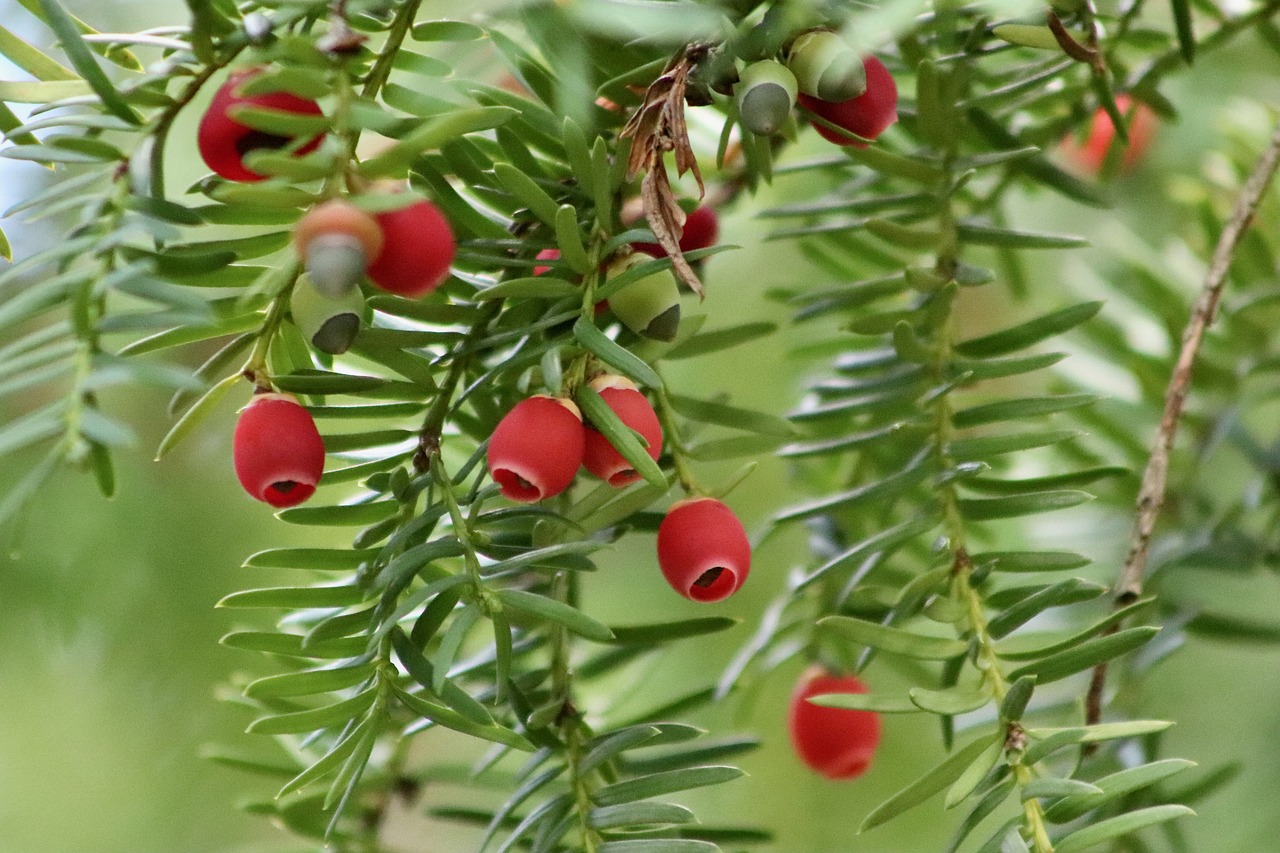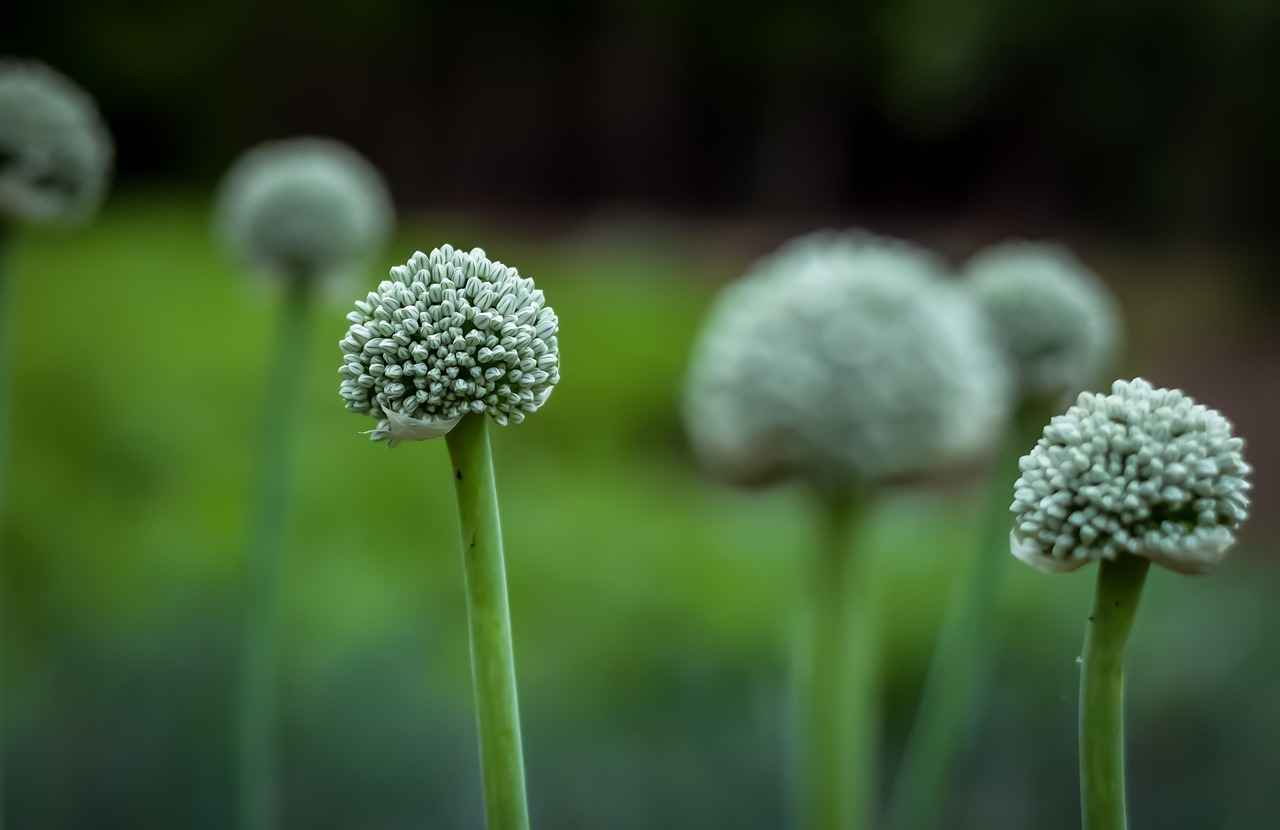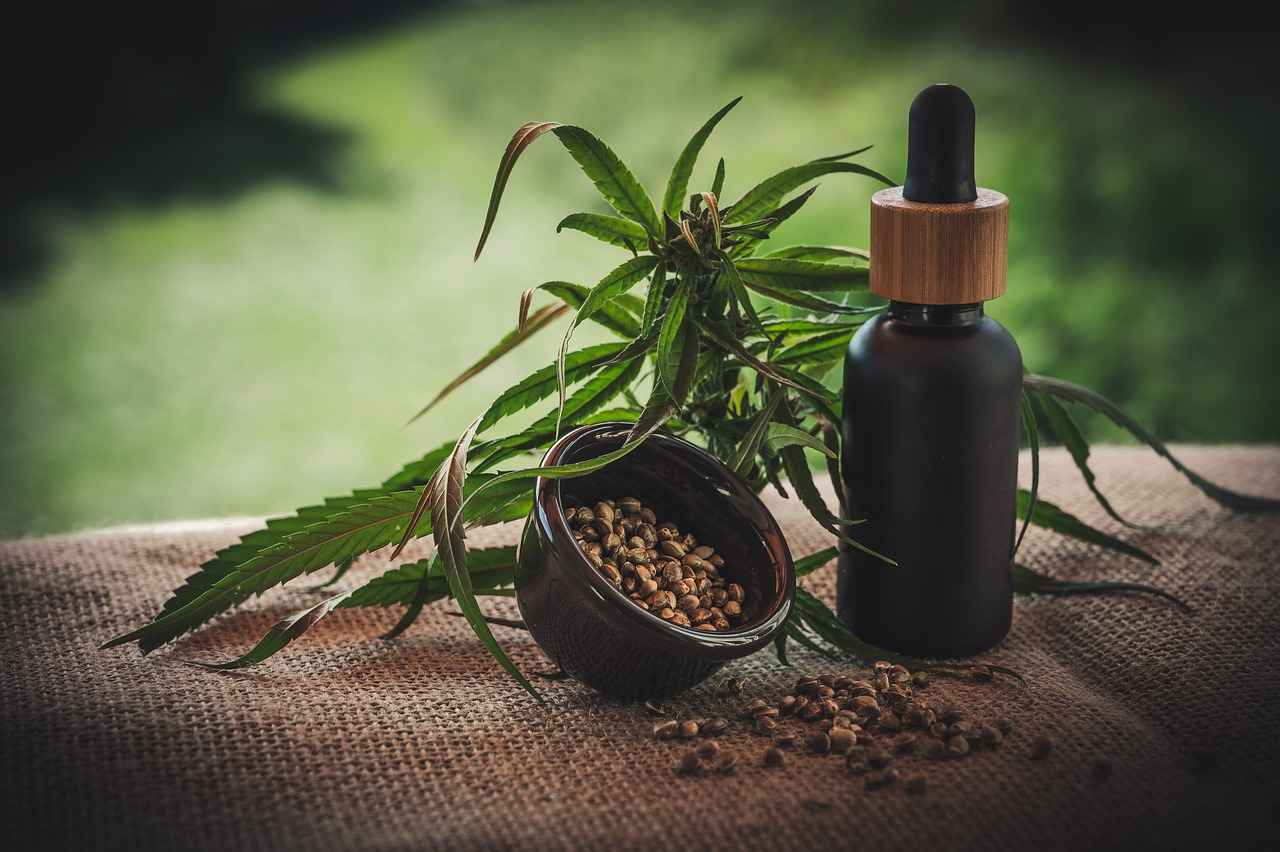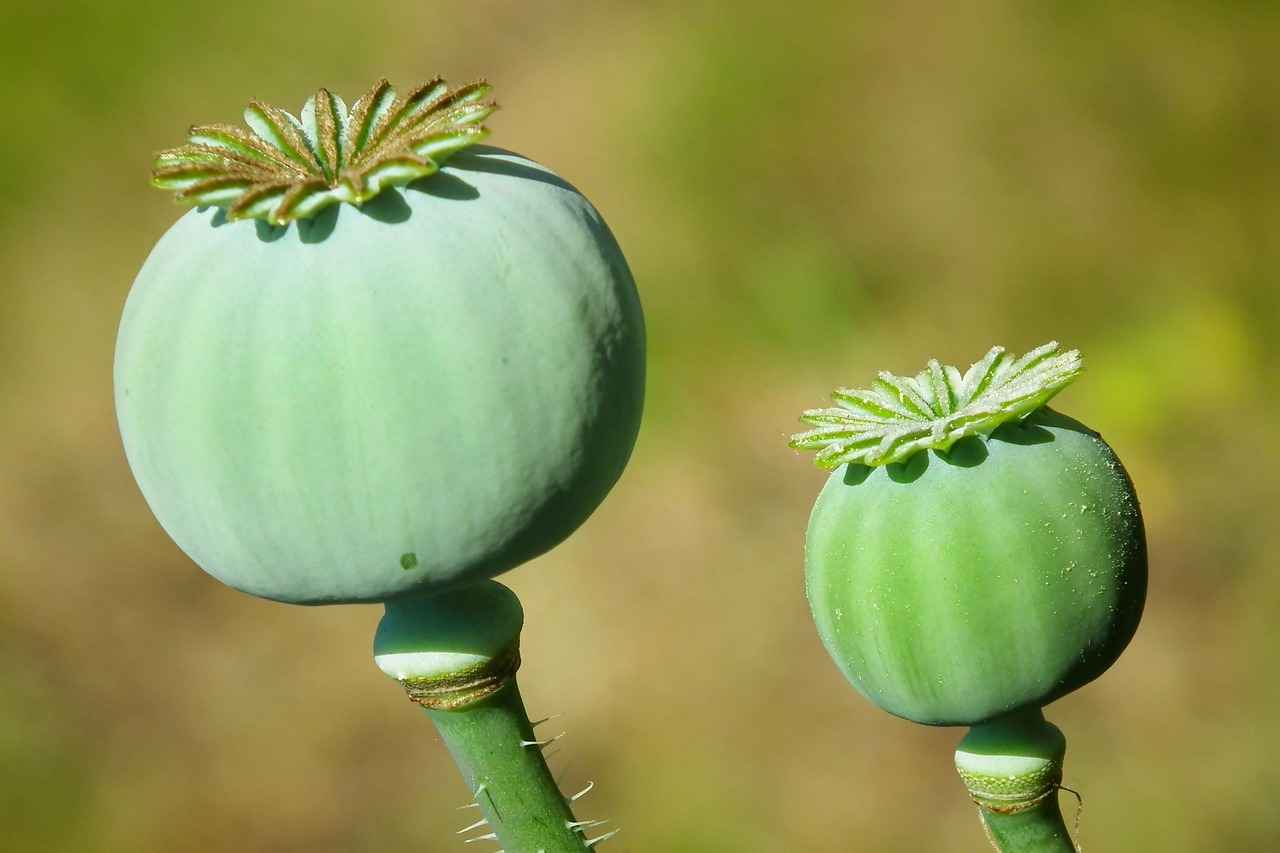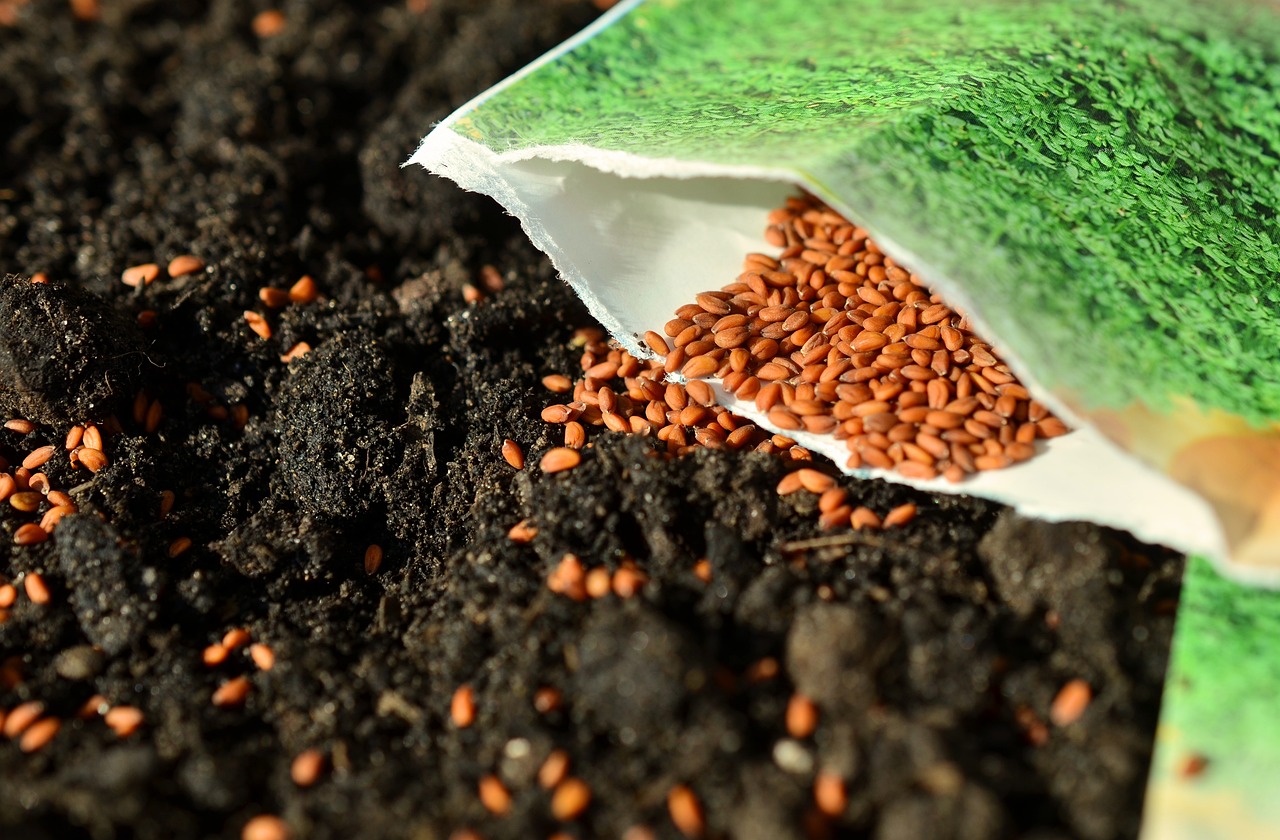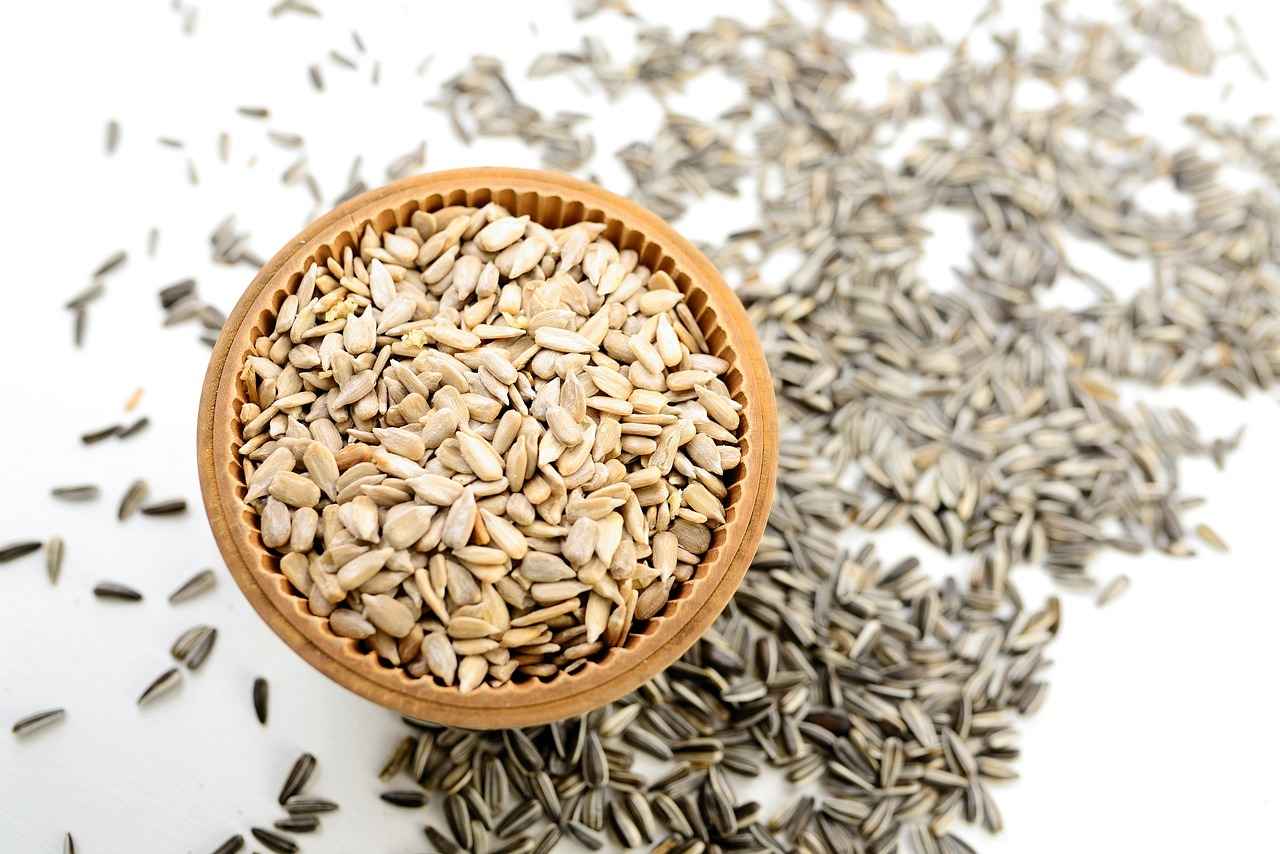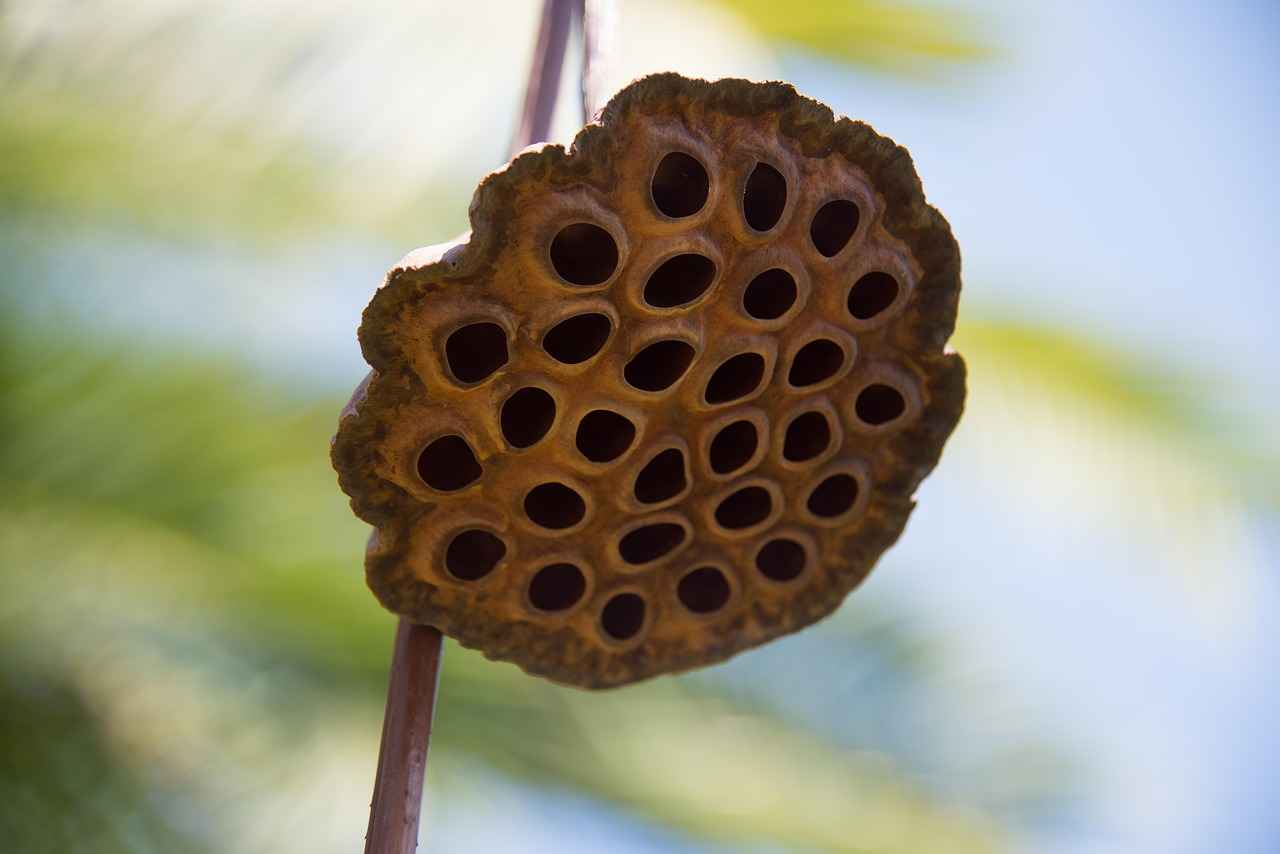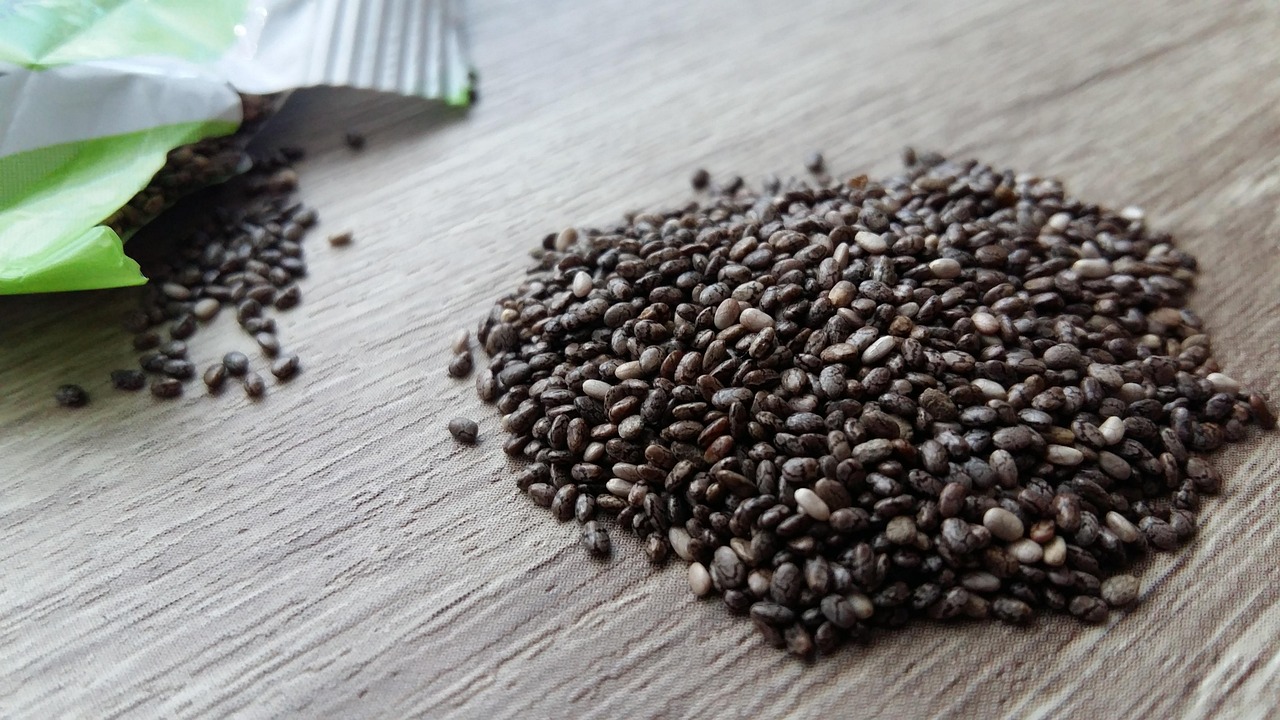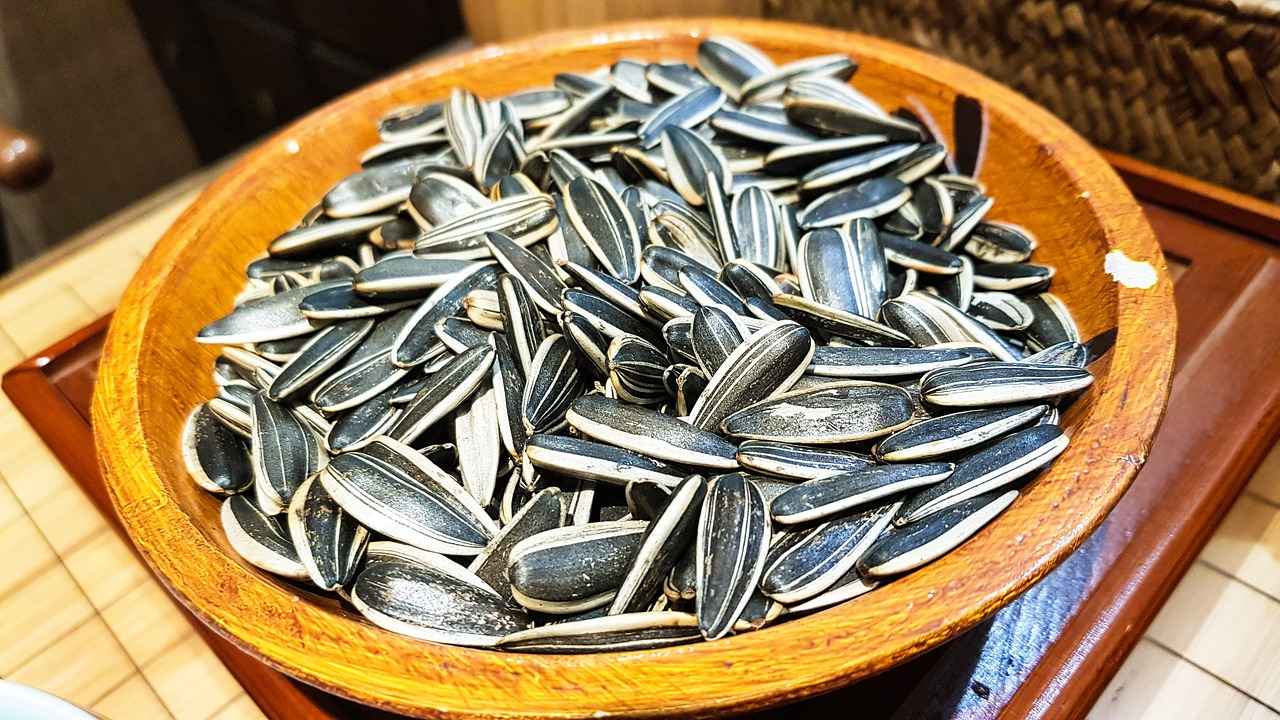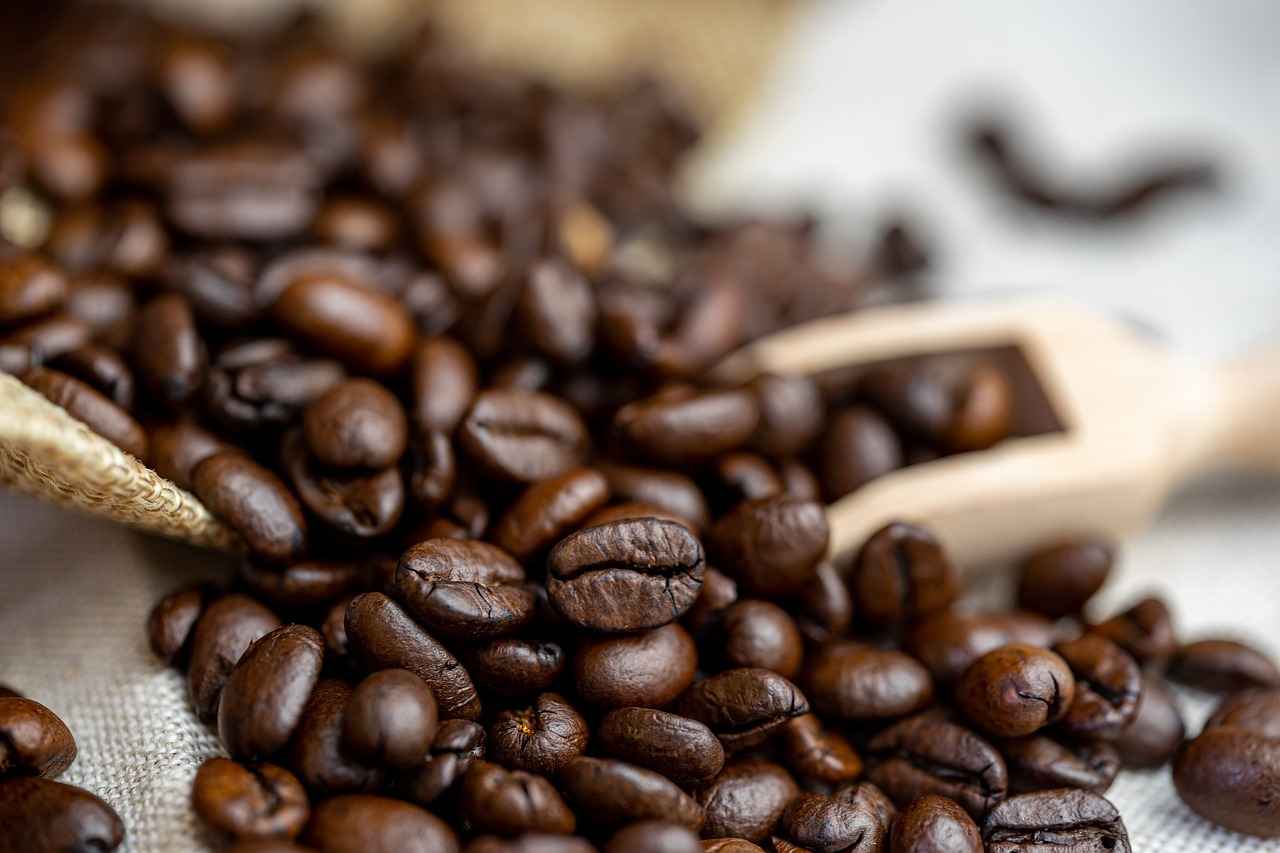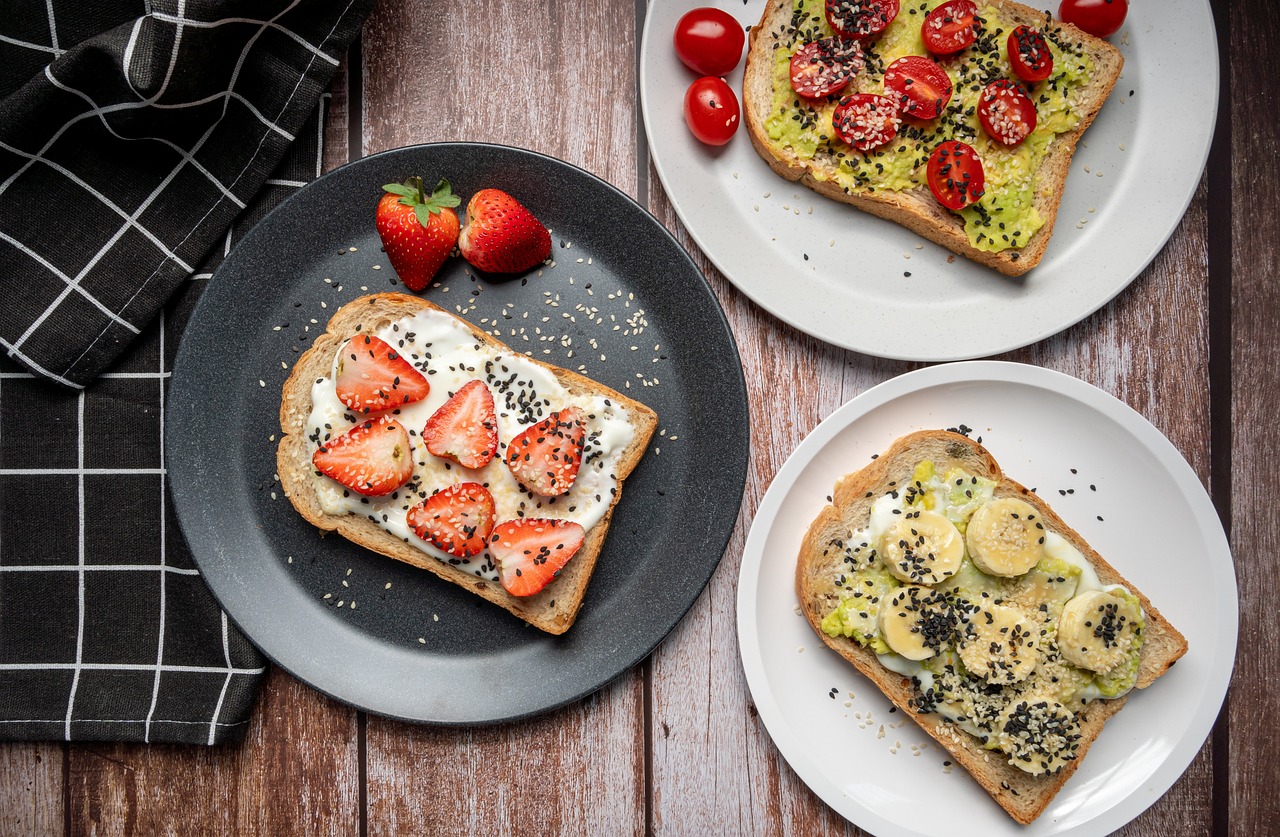What Do Chia Seeds Taste Like? Chia seeds have gained popularity in the health food community for their impressive nutritional profile and versatility in cooking. In this article, we will delve into the unique flavor of chia seeds, their culinary applications, nutritional advantages, and practical tips on how to include them in your diet for enhanced flavor and health benefits.
Chia seeds are small, nutrient-rich seeds derived from the Salvia hispanica plant, which is native to Central America. These seeds are typically black or white and are celebrated for their ability to absorb liquid and form a gel-like consistency, making them a popular ingredient in various dishes.
Chia seeds have a mild and nutty flavor that is often described as neutral. This subtle taste allows them to blend seamlessly into a wide range of dishes without overpowering other ingredients. Whether sprinkled on salads or blended into smoothies, their flavor is understated yet enjoyable.
When dry, chia seeds have a crunchy texture, but once soaked in liquid, they develop a gelatinous coating that makes them chewy and slightly slippery. This unique texture enhances their culinary versatility, allowing them to be used in both sweet and savory dishes.
Chia seeds can be incorporated into numerous recipes, including:
- Smoothies
- Puddings
- Baked goods
- Salads
Their unique properties allow them to act as a thickening agent or an egg substitute in vegan dishes, making them a valuable ingredient in various culinary contexts.
Chia seeds are a powerhouse of nutrition, rich in:
- Omega-3 fatty acids
- Fiber
- Protein
- Antioxidants
- Essential minerals
This impressive nutritional profile contributes to numerous health benefits, including improved heart health, enhanced digestion, and better weight management.
Yes, chia seeds can be consumed raw; however, soaking them in liquid is recommended to improve digestibility and nutrient absorption. They can be easily sprinkled on salads or mixed into yogurt for an added nutritional boost.
While chia seeds can be eaten whole, grinding them may enhance nutrient absorption. Ground chia seeds can be incorporated into smoothies or used in baking, providing a nutritional boost while maintaining a pleasant texture.
Some popular recipes that highlight the texture and nutritional benefits of chia seeds include:
- Chia Seed Pudding: A delicious dessert that can be flavored with fruits or spices.
- Smoothies: Adding chia seeds to smoothies increases fiber and omega-3 content.
- Energy Bars: Homemade energy bars can be made with chia seeds for a nutritious snack.
Generally, chia seeds are safe for most people. However, consuming them in excess may lead to digestive issues due to their high fiber content. It is essential to drink plenty of water when incorporating them into your diet to avoid any discomfort.
Chia seeds can be found in health food stores, supermarkets, and online retailers. When purchasing, look for organic options to ensure quality and maximize health benefits.
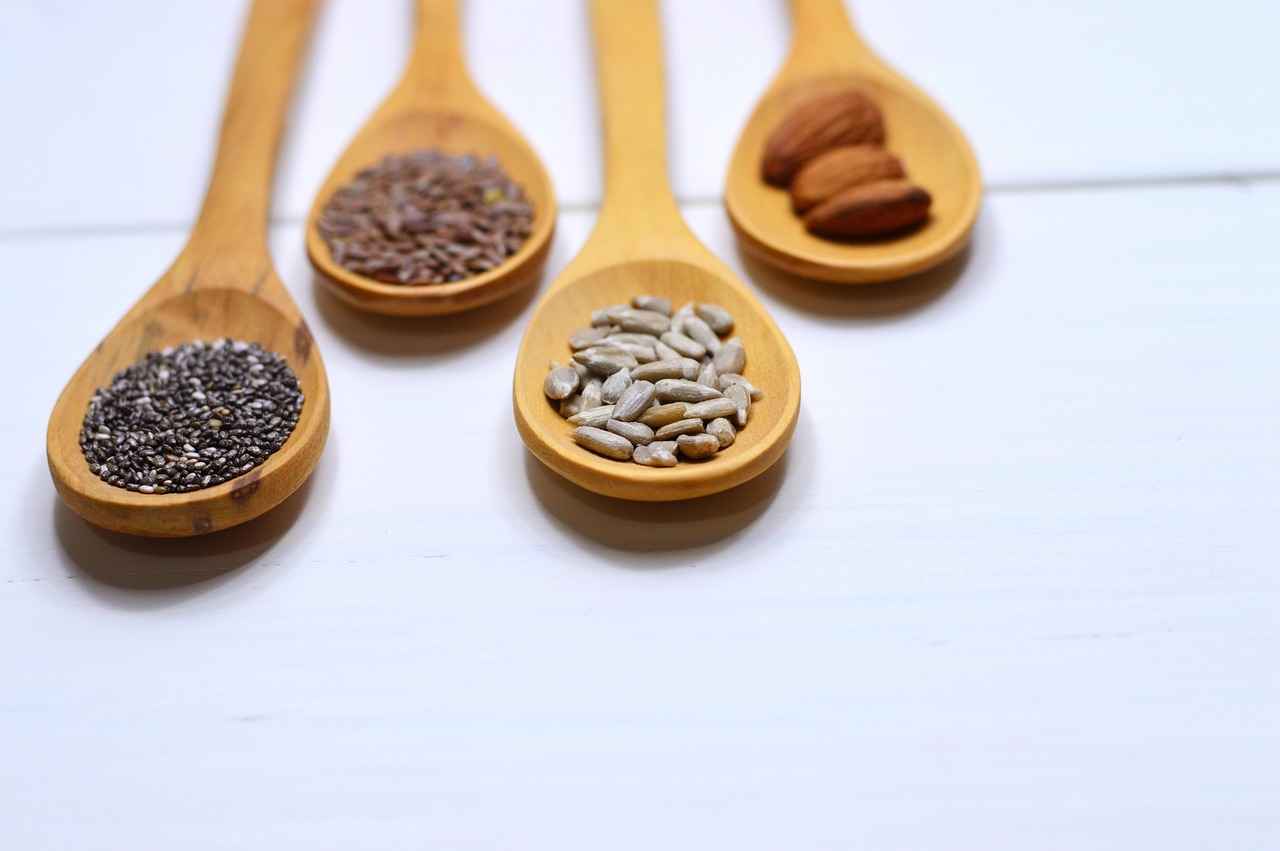
What Are Chia Seeds?
Chia seeds are small, nutrient-dense seeds that come from the Salvia hispanica plant, native to Central and South America. These seeds, which can be black or white, have gained popularity in recent years due to their numerous health benefits and versatility in cooking. They are often touted as a superfood because of their ability to provide a wealth of nutrients in a tiny package.
One of the most remarkable features of chia seeds is their ability to absorb liquid. When soaked in water or other liquids, they swell and form a gel-like consistency. This property not only enhances their texture but also makes them a fantastic ingredient for various recipes, including smoothies, puddings, and baked goods.
Chia seeds are incredibly nutritious. They are packed with essential nutrients, including:
- Omega-3 fatty acids: Important for heart health and reducing inflammation.
- Fiber: Aids in digestion and helps maintain a healthy weight.
- Protein: Supports muscle repair and growth.
- Antioxidants: Protect cells from damage caused by free radicals.
- Minerals: Such as calcium, magnesium, and phosphorus, which are vital for bone health.
The flavor of chia seeds is often described as mild and nutty. This subtle taste allows them to blend seamlessly into a variety of dishes without overpowering other flavors. Whether added to a smoothie, sprinkled on a salad, or incorporated into baked goods, chia seeds enhance nutritional value while maintaining a neutral flavor.
Incorporating chia seeds into your diet can be both easy and enjoyable. Here are some popular methods:
- Chia Seed Pudding: Mix chia seeds with your choice of milk or plant-based milk, add sweeteners like honey or maple syrup, and let it sit overnight for a delicious breakfast or snack.
- Smoothies: Add a tablespoon of chia seeds to your favorite smoothie for an extra nutritional boost.
- Baked Goods: Substitute chia seeds for eggs in vegan recipes or add them to muffins and bread for added texture and nutrients.
- Salads and Yogurt: Sprinkle chia seeds on top of salads or mix them into yogurt for a crunchy texture.
While chia seeds are generally safe for most people, it’s essential to consume them in moderation. Due to their high fiber content, excessive consumption can lead to digestive issues such as bloating or discomfort. It’s advisable to drink plenty of water when incorporating chia seeds into your diet to help with digestion.
You can purchase chia seeds at health food stores, supermarkets, and online retailers. When shopping, consider choosing organic chia seeds to ensure quality and maximize health benefits. They are often available in bulk, making it easy to stock up for your culinary adventures.
In summary, chia seeds are a versatile and nutritious addition to any diet. Their unique properties and health benefits make them a popular choice for health enthusiasts and casual eaters alike. Whether you’re looking to enhance your meals or boost your nutrient intake, chia seeds are an excellent option to consider.
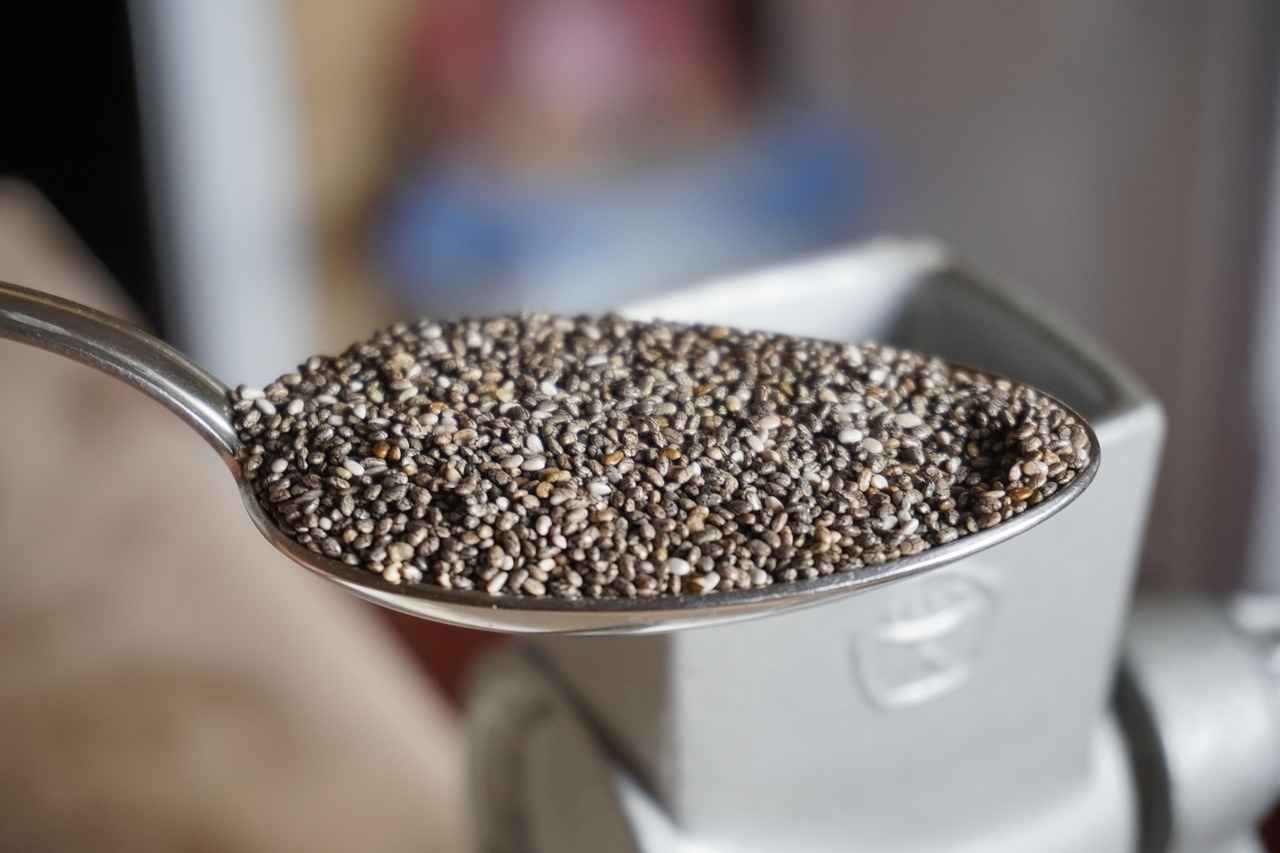
How Do Chia Seeds Taste?
Chia seeds are gaining popularity in the culinary world, not just for their impressive nutritional profile but also for their unique flavor. Understanding how chia seeds taste is essential for incorporating them into your meals effectively.
Chia seeds possess a mild and nutty flavor, often described as neutral. This subtle taste allows them to blend seamlessly into various dishes without overpowering other ingredients. Their versatility means they can be used in both sweet and savory recipes, making them a favorite among health enthusiasts and foodies alike.
When consumed raw, the flavor of chia seeds is quite understated. However, when soaked in liquid, their taste becomes even more muted, allowing them to absorb the flavors of the dishes they are combined with. This quality makes them an excellent addition to smoothies, where they enhance the texture without altering the flavor profile significantly.
- Soaking Method: Soaking chia seeds in water or milk can enhance their gel-like consistency, which can slightly alter the taste experience.
- Additional Ingredients: The flavors of other ingredients in a recipe can elevate or mask the taste of chia seeds. For example, mixing them with fruits or spices can create a more complex flavor profile.
- Roasting: Lightly roasting chia seeds can bring out a deeper, nuttier flavor, making them a delightful topping for salads or yogurt.
Incorporating chia seeds into your meals can be a flavorful experience. Here are some practical tips:
1. **Smoothies:** Add a tablespoon of chia seeds to your favorite smoothie recipe for a nutritional boost without altering the taste.2. **Puddings:** Combine chia seeds with almond milk and a sweetener to create a delicious pudding that can be flavored with vanilla or cocoa.3. **Baked Goods:** Use chia seeds as a substitute for eggs in vegan baking or sprinkle them into muffins and bread for added texture.4. **Salads:** Toss chia seeds into salads for a crunchy texture that complements the freshness of the greens.
One of the appealing aspects of chia seeds is that they do not have a strong aftertaste. This quality makes them a perfect ingredient for various culinary applications. Whether you are adding them to a smoothie, yogurt, or even savory dishes, you can expect a clean finish that does not linger, allowing other flavors to shine through.
Yes, chia seeds can enhance the overall flavor profile of dishes. Their ability to absorb liquids means they can take on the flavors of the ingredients they are mixed with. For example, when combined with fruit juices, chia seeds can create a refreshing drink that is both hydrating and nutritious.
In summary, chia seeds offer a mild, nutty flavor that can complement a wide range of dishes. Their unique properties allow them to blend seamlessly into both sweet and savory recipes, making them a versatile ingredient in any kitchen. Whether you are looking to boost your nutritional intake or simply want to experiment with new flavors, chia seeds are a fantastic addition to your diet.

What Is the Texture of Chia Seeds?
Chia seeds, often hailed as a superfood, possess a unique texture that plays a significant role in their culinary applications. Understanding the texture of chia seeds is essential for anyone looking to incorporate them into their diet effectively.
When dry, chia seeds present a crunchy texture that adds a delightful crunch to various dishes. This initial texture makes them a popular addition to salads, granola, and baked goods, where they can provide a satisfying bite.
However, the magic of chia seeds truly unfolds when they are soaked in liquid. Upon soaking, chia seeds absorb liquid and swell, developing a gelatinous coating that transforms their texture entirely. This process results in a chewy and slightly slippery consistency that enhances their versatility in the kitchen. The gelatinous texture allows chia seeds to act as a thickening agent, making them ideal for puddings, smoothies, and sauces.
- Chia Pudding: When mixed with milk or plant-based alternatives, chia seeds expand and create a creamy pudding that can be flavored with fruits, vanilla, or cocoa.
- Smoothies: Adding soaked chia seeds to smoothies not only thickens the drink but also provides a unique mouthfeel that complements the creamy texture of blended fruits.
- Baking: In baking, chia seeds can be used as an egg substitute. When mixed with water, they form a gel that binds ingredients together, providing moisture and a chewy texture to baked goods.
The texture of chia seeds is not just a matter of preference; it significantly impacts the overall experience of a dish. The gel-like consistency they develop when soaked can enhance flavors, as it allows the seeds to absorb the tastes of the surrounding ingredients. This makes them an excellent addition to both sweet and savory dishes, as they can seamlessly integrate into various flavor profiles.
Indeed, the gelatinous texture of soaked chia seeds can be utilized in numerous ways:
- Thickening Agent: Use chia seeds to thicken soups and sauces without adding extra calories or fat.
- Healthy Desserts: Incorporate them into desserts for added texture and nutritional benefits, such as in fruit compotes or as a topping for yogurt.
- Energy Bars: The chewy texture of soaked chia seeds makes them a perfect ingredient in homemade energy bars, providing sustained energy.
To achieve the best texture, it is recommended to soak chia seeds in a liquid for at least 15-30 minutes before consumption. A common ratio is 1 part chia seeds to 4 parts liquid. This allows the seeds to fully absorb the liquid and develop their characteristic gel-like consistency.
In conclusion, the texture of chia seeds is a vital aspect of their appeal and functionality in the kitchen. Whether enjoyed in their crunchy form or transformed into a chewy gel, these seeds offer a unique culinary experience that enhances a wide array of dishes. Embracing their versatile texture can lead to creative and nutritious meals that cater to various dietary preferences.
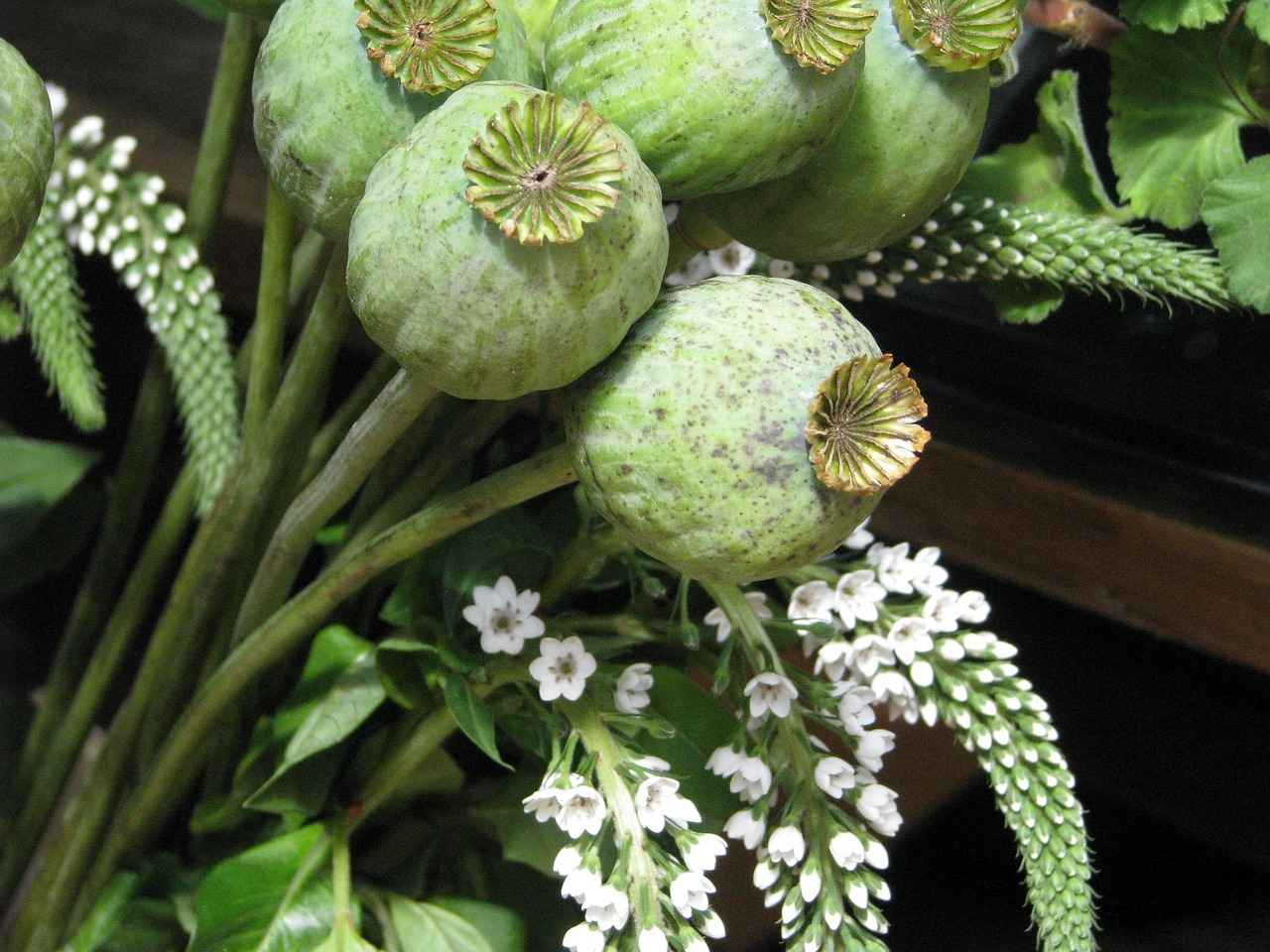
How to Use Chia Seeds in Cooking?
Chia seeds have gained immense popularity in the culinary world due to their versatility and health benefits. Incorporating these tiny seeds into your cooking can elevate your dishes while providing a nutritional boost. Below, we explore various ways to use chia seeds in your kitchen.
One of the simplest ways to use chia seeds is by adding them to smoothies. Their mild flavor complements fruits and greens, making them an excellent addition. To prepare a chia seed smoothie, blend your favorite fruits, a handful of greens, and a tablespoon of chia seeds. For an extra creaminess, allow the mixture to sit for a few minutes to let the seeds absorb some liquid and expand.
Chia seed pudding is a popular dish that can be customized to suit your taste. To make it, combine 3 tablespoons of chia seeds with 1 cup of almond milk (or any milk of your choice) and a sweetener like honey or maple syrup. Stir well and let it sit in the fridge for a few hours or overnight. The seeds will absorb the liquid and create a thick, pudding-like texture. Top with fruits, nuts, or granola for added flavor and crunch.
Chia seeds can also be incorporated into baked goods as a nutritional enhancer. They can be added to muffins, bread, or pancakes for added texture and health benefits. A common approach is to mix 1 tablespoon of chia seeds with 3 tablespoons of water to create a chia egg, which can serve as an egg substitute in vegan recipes. This not only binds the ingredients but also adds fiber and omega-3 fatty acids.
In addition to being used in baking, chia seeds can act as a thickening agent in various dishes. When mixed with liquids, they swell and form a gel-like consistency, making them perfect for soups, sauces, or dressings. Simply mix chia seeds with your desired liquid and let it sit until thickened. This method is particularly useful for those looking to create gluten-free or vegan dishes.
Another way to incorporate chia seeds is by sprinkling them on salads or mixing them into snack bars. They add a delightful crunch and enhance the nutritional profile of your meals. For a quick snack, combine chia seeds with nuts and dried fruits to create a healthy trail mix. You can also mix them into yogurt or oatmeal for a nutritious breakfast option.
To maintain their freshness, store chia seeds in a cool, dry place, preferably in an airtight container. They can last for several years if stored properly, making them a convenient pantry staple.
Incorporating chia seeds into your cooking not only enhances flavor but also boosts the nutritional value of your meals. With their ability to thicken and bind, they are an excellent ingredient for both sweet and savory dishes. Whether you are making smoothies, puddings, or baked goods, chia seeds offer endless possibilities for creativity in the kitchen.

What Are the Nutritional Benefits of Chia Seeds?
Chia seeds, derived from the Salvia hispanica plant, are not only versatile in culinary applications but also a treasure trove of essential nutrients. These tiny seeds pack a powerful punch when it comes to health benefits, making them a popular choice among health enthusiasts and nutritionists alike.
Rich Source of Omega-3 Fatty Acids
One of the standout features of chia seeds is their high content of omega-3 fatty acids. These essential fats are crucial for heart health, as they help reduce inflammation and lower the risk of chronic diseases. In fact, chia seeds are one of the richest plant-based sources of omega-3s, surpassing even flaxseeds. Incorporating chia seeds into your diet can significantly contribute to your daily omega-3 intake.
High in Dietary Fiber
Chia seeds are also an excellent source of dietary fiber. Just two tablespoons of chia seeds contain approximately 11 grams of fiber, which is about one-third of the recommended daily intake. This high fiber content aids in digestion, promotes feelings of fullness, and can help regulate blood sugar levels. The soluble fiber in chia seeds can also help lower cholesterol levels, contributing to overall heart health.
Packed with Protein
For those looking to increase their protein intake, chia seeds offer a plant-based option that is both nutritious and versatile. With about 4 grams of protein per two tablespoons, they provide a complete protein source, containing all nine essential amino acids. This makes them an ideal addition to vegetarian and vegan diets, supporting muscle repair and growth.
Abundant in Antioxidants
Chia seeds are rich in antioxidants, which play a vital role in protecting the body against oxidative stress and free radicals. These antioxidants can help reduce the risk of chronic diseases, including certain cancers and heart disease. By incorporating chia seeds into your meals, you can enhance your antioxidant intake and support overall health.
Essential Minerals for Overall Health
- Calcium: Important for bone health, chia seeds provide a substantial amount of calcium, making them a great option for those who are lactose intolerant or following a dairy-free diet.
- Magnesium: This mineral is crucial for muscle function, energy production, and maintaining a healthy nervous system. Chia seeds can help meet your magnesium needs.
- Phosphorus: Important for healthy bones and teeth, phosphorus also plays a role in energy production and storage.
How to Incorporate Chia Seeds into Your Diet
Adding chia seeds to your diet is easy and can be done in various ways. They can be sprinkled on top of salads, blended into smoothies, or used as an ingredient in baked goods. For a nutritious breakfast, consider making chia seed pudding by soaking the seeds in milk or a milk alternative overnight. This not only enhances their digestibility but also creates a delicious and satisfying meal.
Final Thoughts on Chia Seeds
With their impressive nutritional profile, chia seeds are a fantastic addition to any diet. Their benefits extend beyond just being a source of omega-3 fatty acids, fiber, and protein; they also provide essential minerals and antioxidants that support overall health. By incorporating chia seeds into your meals, you can enjoy their many health benefits while enhancing the flavor and texture of your dishes.
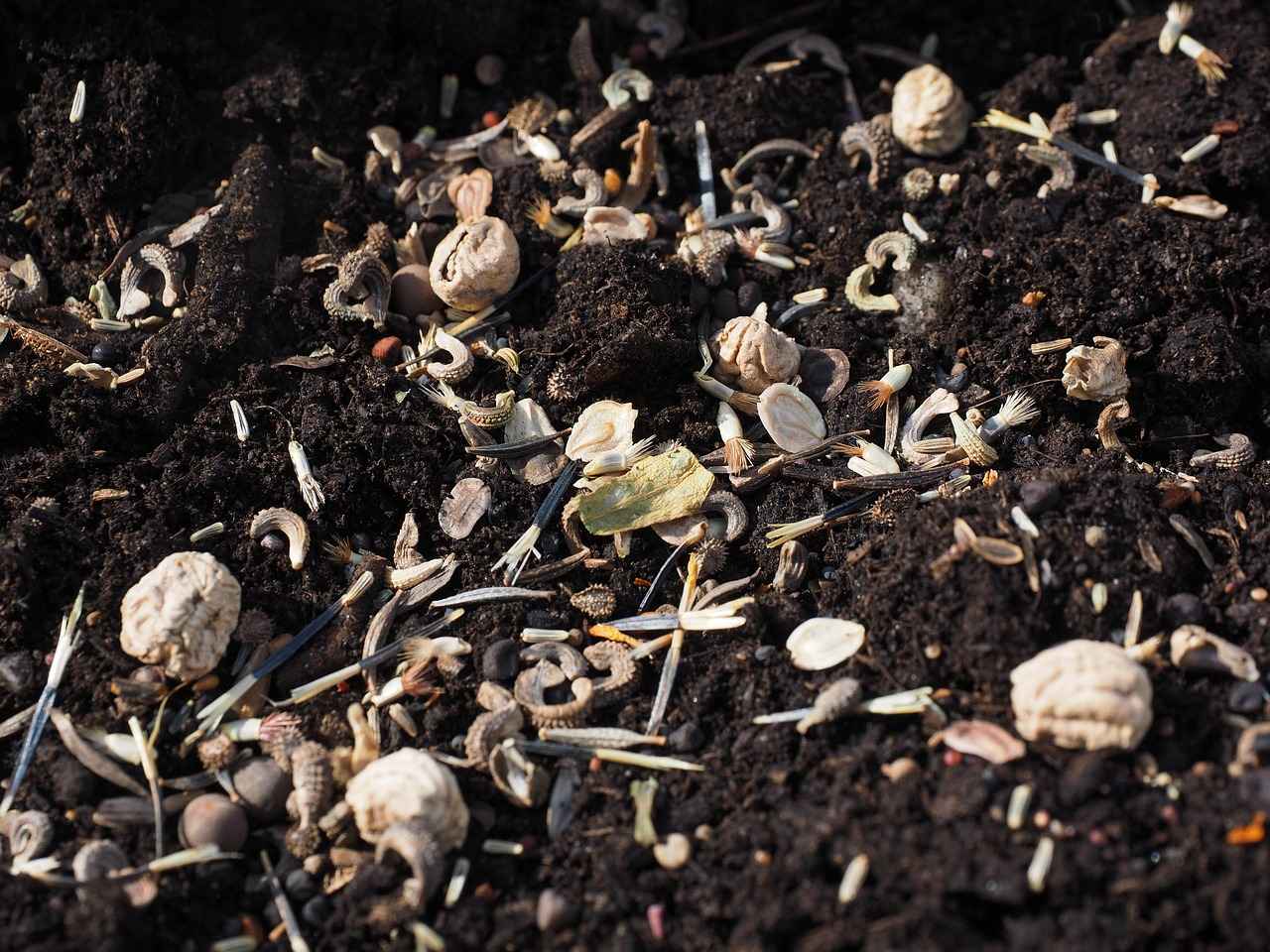
Can Chia Seeds Be Eaten Raw?
Chia seeds have gained immense popularity in recent years, not only for their nutritional benefits but also for their versatility in various dishes. One common question that arises is, “Can chia seeds be eaten raw?” The answer is yes, chia seeds can be consumed raw; however, soaking them in liquid is highly recommended to improve their digestibility and nutrient absorption.
Chia seeds, derived from the Salvia hispanica plant, are tiny black or white seeds that pack a powerful nutritional punch. They are rich in omega-3 fatty acids, fiber, and protein, making them an excellent addition to a healthy diet. When consumed raw, these seeds can be sprinkled on salads or mixed into yogurt, providing a delightful crunch and a subtle nutty flavor.
While it is safe to eat chia seeds raw, soaking them before consumption offers several benefits:
- Enhanced Digestibility: Soaking chia seeds allows them to absorb liquid, which helps break down the outer shell. This process makes it easier for the body to digest and absorb the nutrients.
- Improved Nutrient Absorption: The gel-like consistency formed when chia seeds are soaked can enhance the bioavailability of nutrients, allowing your body to utilize them more effectively.
- Hydration: Soaked chia seeds can help keep you hydrated, as they absorb up to 12 times their weight in water, making them an excellent addition to smoothies or hydration drinks.
To soak chia seeds, simply mix one part seeds with three parts liquid (water, juice, or milk) and let them sit for about 20-30 minutes. You will notice they swell and form a gel-like substance. This soaked chia can be added to various dishes:
- Salads: Add soaked chia seeds to your favorite salads for a nutritious boost.
- Smoothies: Blend soaked chia seeds into smoothies for added texture and health benefits.
- Puddings: Combine soaked chia seeds with milk or a dairy alternative to create a delicious pudding.
If you prefer to consume chia seeds raw, consider the following tips:
- Sprinkle on Foods: Add raw chia seeds to oatmeal, yogurt, or cereal for added crunch.
- Baking: Incorporate raw chia seeds into baked goods like muffins or bread for a nutritious twist.
- Energy Bars: Use raw chia seeds in homemade energy bars for a quick snack.
While chia seeds are generally safe for most people, moderation is key. Their high fiber content can lead to digestive discomfort if consumed in excess. It is advisable to drink plenty of water when adding chia seeds to your diet to help with digestion.
In summary, chia seeds can indeed be eaten raw, but soaking them enhances their digestibility and nutrient absorption, making them a more beneficial addition to your meals. Whether you choose to sprinkle them on your salad or incorporate them into a smoothie, chia seeds are a versatile and nutritious option that can contribute to a healthy lifestyle.
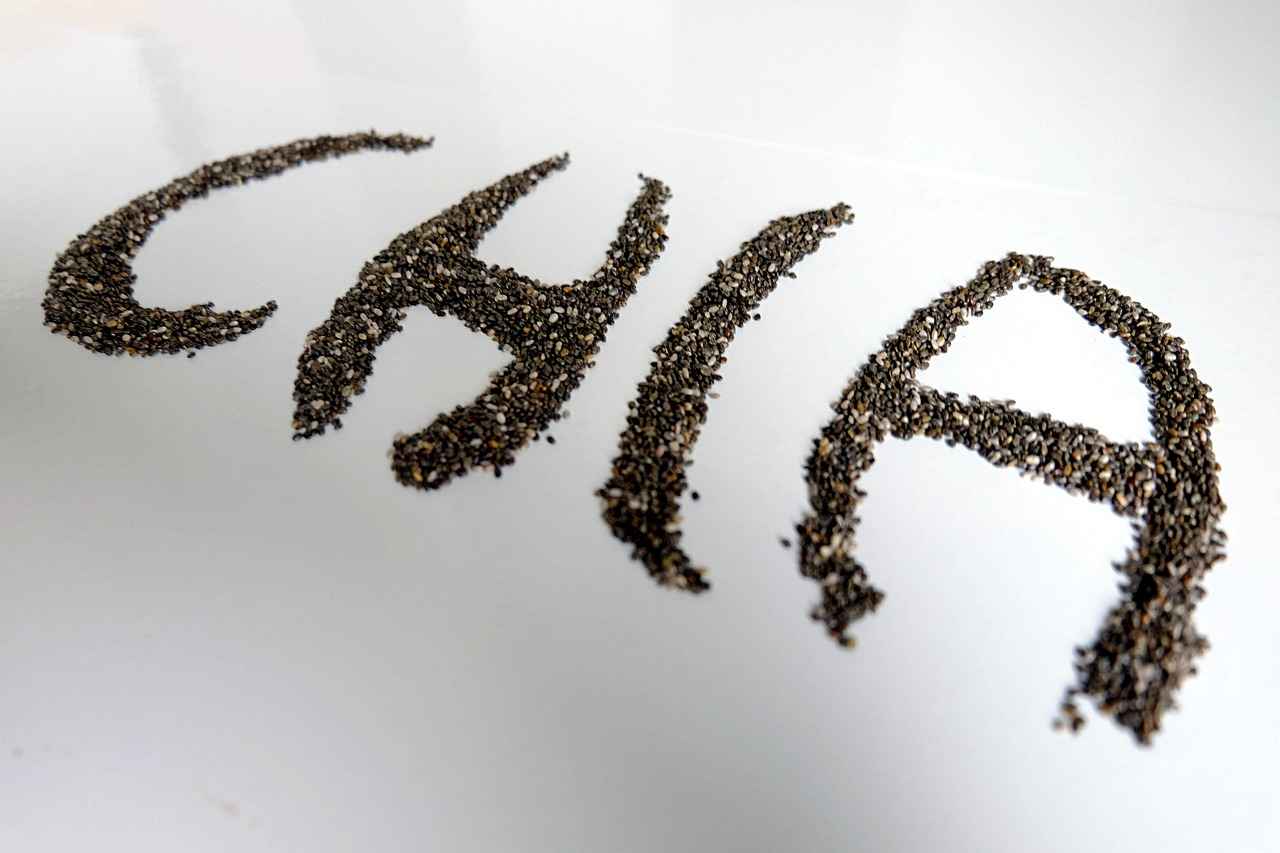
Do Chia Seeds Need to Be Ground?
Chia seeds have gained immense popularity in the health and wellness community due to their numerous nutritional benefits and versatility in cooking. One common question that arises among health enthusiasts is, “Do chia seeds need to be ground?” This inquiry is crucial for those looking to maximize the health benefits of these tiny seeds.
Chia seeds are derived from the Salvia hispanica plant, native to Mexico and Guatemala. These seeds are rich in omega-3 fatty acids, fiber, protein, and various essential minerals, making them a nutritional powerhouse. However, their effectiveness in delivering these nutrients can depend on how they are consumed.
While chia seeds can be consumed in their whole form, grinding them can significantly enhance nutrient absorption. Whole seeds may pass through the digestive system without being fully broken down, which can limit the body’s ability to absorb their nutrients. In contrast, ground chia seeds are more easily digestible, allowing for better nutrient availability.
Ground chia seeds can be seamlessly integrated into various recipes. Here are some popular ways to use them:
- Smoothies: Add a tablespoon of ground chia seeds to your favorite smoothie for an extra boost of nutrients.
- Baking: Substitute a portion of flour with ground chia seeds in recipes for muffins, pancakes, or bread.
- Oatmeal: Stir ground chia seeds into your morning oatmeal or porridge for added texture and nutrition.
- Energy Bars: Use ground chia seeds in homemade energy bars or protein balls for enhanced flavor and health benefits.
Grinding chia seeds not only improves nutrient absorption but also alters their texture, making them more versatile in cooking. Ground seeds have a finer consistency that can blend well into liquids, creating a smooth texture in dishes. Additionally, they can serve as a natural thickening agent, making them ideal for puddings and sauces.
Grinding chia seeds is simple and can be done using various methods:
- Coffee Grinder: A coffee grinder is one of the most efficient ways to grind chia seeds quickly.
- Blender: A high-speed blender can also effectively pulverize the seeds.
- Mortar and Pestle: For a more traditional approach, use a mortar and pestle to grind the seeds manually.
While grinding chia seeds offers many benefits, there are a few considerations to keep in mind. Ground chia seeds can lose some of their nutritional value over time due to exposure to air and light. Therefore, it is advisable to grind only what you need or store ground seeds in an airtight container in the refrigerator to maintain their freshness.
In summary, while whole chia seeds can be beneficial, grinding them can enhance nutrient absorption and versatility in cooking. Incorporating ground chia seeds into your diet is an excellent way to maximize their health benefits and enjoy their mild, nutty flavor in a variety of dishes. Whether you add them to smoothies, baked goods, or breakfast bowls, ground chia seeds can be a valuable addition to a balanced diet.
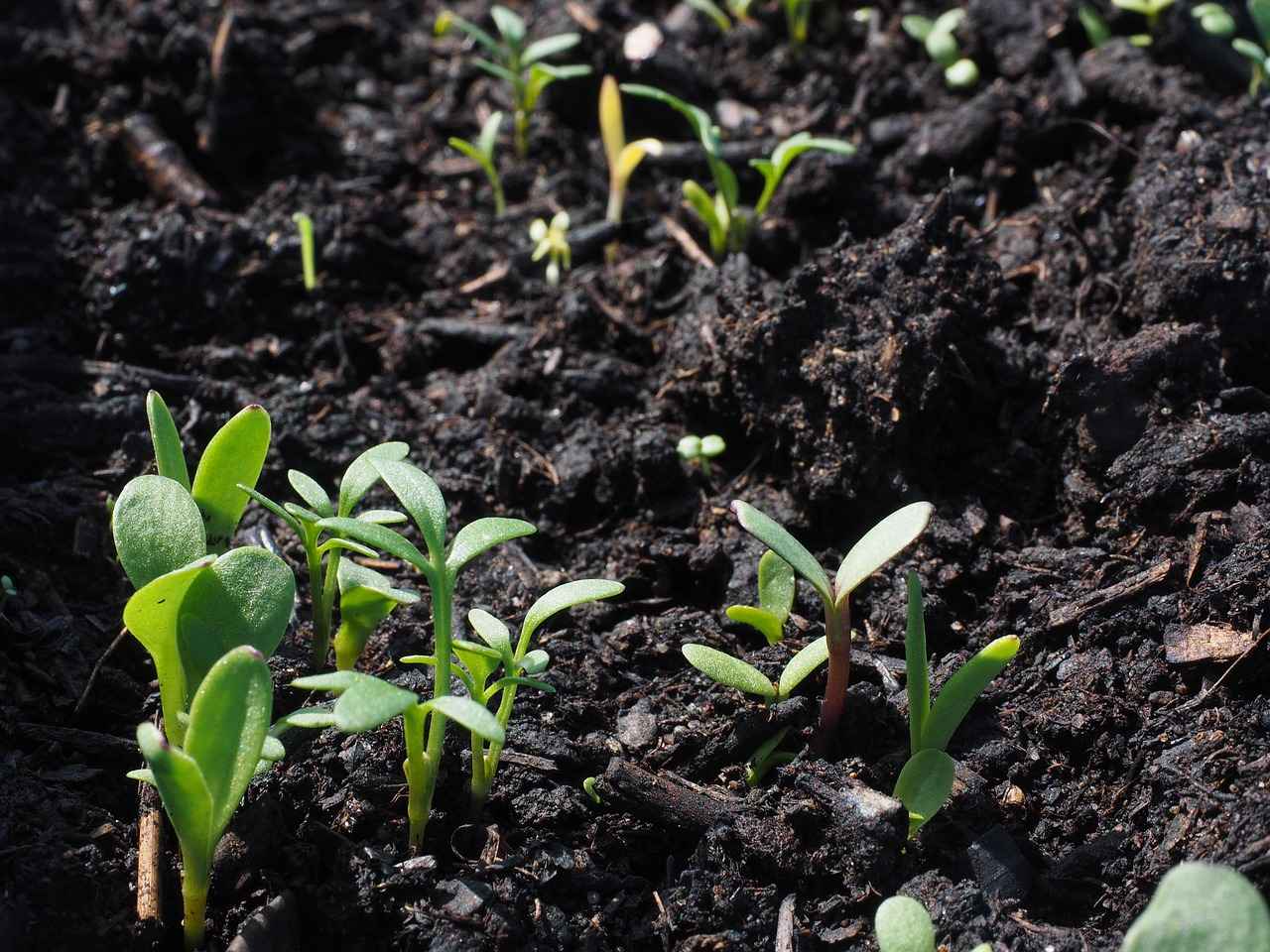
What Are Some Popular Chia Seed Recipes?
Chia seeds have gained immense popularity in recent years, not just for their health benefits but also for their versatility in various recipes. Among the most favored preparations are chia seed pudding, smoothies, and energy bars. These dishes not only highlight the unique texture of chia seeds but also showcase their nutritional prowess.
Chia seed pudding is a delightful and nutritious dish that can be easily prepared. To make this pudding, simply combine chia seeds with your choice of liquid, such as almond milk or coconut milk, and let it sit for a few hours or overnight. The seeds will absorb the liquid, creating a creamy, gel-like consistency. You can enhance the flavor by adding vanilla extract, honey, or fruits like berries and bananas. This dish is not only a tasty breakfast option but also serves as a healthy dessert or snack.
Another popular way to incorporate chia seeds into your diet is through smoothies. Their mild flavor allows them to blend seamlessly with various fruits and vegetables. Simply add a tablespoon of chia seeds to your favorite smoothie recipe for an added boost of omega-3 fatty acids and fiber. For example, a banana and spinach smoothie with chia seeds can provide a refreshing and nutritious start to your day. The seeds also help thicken the smoothie, giving it a satisfying texture.
Energy bars made with chia seeds are an excellent on-the-go snack. They can be prepared at home using a combination of oats, nuts, dried fruits, and chia seeds. Simply mix the ingredients together, press them into a baking dish, and refrigerate until firm. These bars are not only easy to make but are also customizable according to your taste preferences. The chia seeds add a nice crunch and a dose of nutrition, making these bars a wholesome alternative to store-bought snacks.
Chia seeds are incredibly versatile and can be used in both sweet and savory contexts. For instance, you can sprinkle them over salads for an added texture or mix them into your favorite yogurt for a nutritious breakfast. They can also be used as a thickening agent in soups and sauces, or even as an egg substitute in vegan baking. This adaptability makes chia seeds a valuable ingredient in any kitchen.
Incorporating chia seeds into your recipes not only enhances flavor but also provides numerous health benefits. Rich in antioxidants, fiber, and essential minerals, chia seeds can help improve digestion, support heart health, and provide sustained energy. Including them in your meals can contribute to a balanced diet, making them a worthy addition to your culinary repertoire.
Whether you prefer the creamy texture of chia seed pudding, the refreshing taste of smoothies, or the convenience of energy bars, there are countless ways to enjoy chia seeds. Their nutritional benefits and versatility make them an excellent choice for anyone looking to enhance their diet. With just a little creativity, you can easily incorporate these tiny seeds into your meals and snacks, reaping the rewards of their health benefits while enjoying delicious flavors.

Are There Any Side Effects of Eating Chia Seeds?
Chia seeds have gained immense popularity in recent years due to their numerous health benefits and culinary versatility. However, like any food, they come with potential side effects that consumers should be aware of. This section explores the various side effects of eating chia seeds, providing a comprehensive understanding of how to enjoy them safely.
While chia seeds are generally considered safe for most individuals, consuming them in excess can lead to certain digestive issues. The primary concern stems from their high fiber content, which can cause discomfort if not introduced gradually into the diet.
- Digestive Discomfort: Eating too many chia seeds at once can lead to bloating, gas, or abdominal pain. This is particularly true for those who are not accustomed to a high-fiber diet.
- Choking Hazard: Chia seeds can absorb liquid and expand significantly. If consumed dry without adequate hydration, they may pose a choking risk, especially for individuals with swallowing difficulties.
- Allergic Reactions: Although rare, some people may experience allergic reactions to chia seeds. Symptoms can include itching, swelling, or difficulty breathing.
- Interactions with Medications: Chia seeds may affect blood sugar levels and blood pressure. Therefore, individuals on medications for diabetes or hypertension should consult with a healthcare provider before adding chia seeds to their diet.
To enjoy the benefits of chia seeds while minimizing potential side effects, consider the following tips:
- Start Slowly: If you are new to chia seeds, begin with a small amount (about one teaspoon) and gradually increase to the recommended serving size (one to two tablespoons).
- Stay Hydrated: Always consume chia seeds with plenty of water or liquid. This not only aids in digestion but also prevents the seeds from expanding in the throat.
- Soak Before Eating: Soaking chia seeds in water, juice, or milk for at least 30 minutes before consumption can help ease digestive issues and enhance nutrient absorption.
While chia seeds are safe for most people, certain individuals should exercise caution:
- People with Gastrointestinal Disorders: Those with conditions such as irritable bowel syndrome (IBS) or inflammatory bowel disease (IBD) may experience heightened sensitivity to high-fiber foods.
- Individuals with Swallowing Difficulties: As mentioned earlier, the expansion of chia seeds can be problematic for those who have trouble swallowing.
- Pregnant or Nursing Women: Although chia seeds can be beneficial, pregnant or nursing women should consult their healthcare provider to ensure they are suitable for their diet.
To maximize the health benefits of chia seeds while minimizing side effects, it is crucial to follow some basic guidelines:
- Moderation is Key: Stick to the recommended serving size to avoid digestive discomfort.
- Combine with Other Foods: Incorporating chia seeds into smoothies, oatmeal, or yogurt can help balance their effects and enhance overall nutrition.
- Consult a Healthcare Professional: If you have existing health conditions or concerns, always seek advice from a healthcare provider before making significant dietary changes.
In summary, while chia seeds offer a wealth of health benefits, it is essential to be mindful of their potential side effects. By understanding how to incorporate them safely into your diet, you can enjoy their nutritional advantages without discomfort.

Where to Buy Chia Seeds?
When it comes to incorporating chia seeds into your diet, knowing where to purchase them is essential. These tiny seeds have gained immense popularity due to their numerous health benefits and versatility in cooking. In this section, we will explore the best places to buy chia seeds, ensuring you find quality options that suit your needs.
Chia seeds can be found in a variety of locations, making it convenient for health enthusiasts and those new to these superfoods alike. Here are some of the most common places to look for chia seeds:
- Health Food Stores: Local health food stores often stock a range of organic products, including chia seeds. Shopping at these stores not only supports local businesses but also allows you to ask staff for recommendations on the best brands.
- Supermarkets: Many supermarkets now carry chia seeds in their health food or organic sections. Look for well-known brands that prioritize quality and sustainability.
- Online Retailers: The convenience of online shopping means you can easily compare prices and read reviews. Websites like Amazon, Thrive Market, and health-focused online stores often have a wide selection of chia seeds, including bulk options.
- Farmers Markets: If you prefer fresh, local produce, check out your local farmers market. Some vendors may offer organic chia seeds, and you can often find unique varieties.
When purchasing chia seeds, it’s crucial to look for organic options. Organic chia seeds are typically free from pesticides and harmful chemicals, ensuring you receive the highest quality product. Additionally, organic seeds often retain more nutrients, maximizing their health benefits.
Another important factor to consider is the packaging. Look for chia seeds that are stored in dark, airtight containers to protect them from light and moisture, which can degrade their quality over time. Always check the expiration date to ensure freshness.
For those who are conscious about supporting sustainable practices, consider brands that prioritize eco-friendly sourcing and packaging. Many companies now highlight their commitment to sustainability on their labels, making it easier for you to make informed choices.
Lastly, keep an eye out for sales or discounts, especially when shopping online. Many retailers offer bulk purchasing options, which can save you money in the long run, especially if you plan to incorporate chia seeds into your daily routine.
In summary, whether you choose to shop at local health food stores, supermarkets, online retailers, or farmers markets, there are plenty of options available for purchasing chia seeds. Always prioritize organic and sustainably sourced products to ensure you are getting the best for your health and the environment.
Frequently Asked Questions
- What do chia seeds taste like?
Chia seeds have a mild, nutty flavor that’s often described as neutral. This subtle taste makes them perfect for blending into various dishes without overpowering other ingredients.
- Can I eat chia seeds raw?
Absolutely! While you can eat chia seeds raw, soaking them in liquid is recommended to enhance digestibility and nutrient absorption. They can be sprinkled on salads or mixed into yogurt for added crunch.
- How can I incorporate chia seeds into my diet?
Chia seeds are incredibly versatile! You can add them to smoothies, make chia pudding, or use them as a thickening agent in soups and sauces. They also work well as an egg substitute in vegan baking.
- Do chia seeds need to be ground?
While you can consume chia seeds whole, grinding them may enhance nutrient absorption. Ground chia can be easily added to smoothies or incorporated into baked goods for an extra nutritional boost.
- Are there any side effects of eating chia seeds?
Chia seeds are generally safe for most people, but consuming them in excess can lead to digestive issues due to their high fiber content. It’s essential to drink plenty of water when adding them to your diet.
